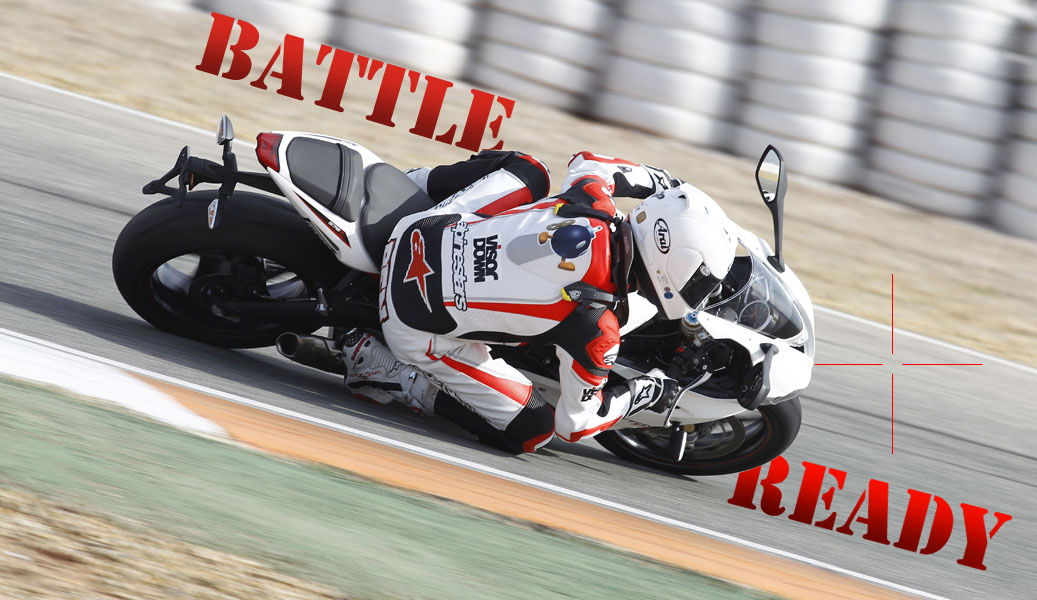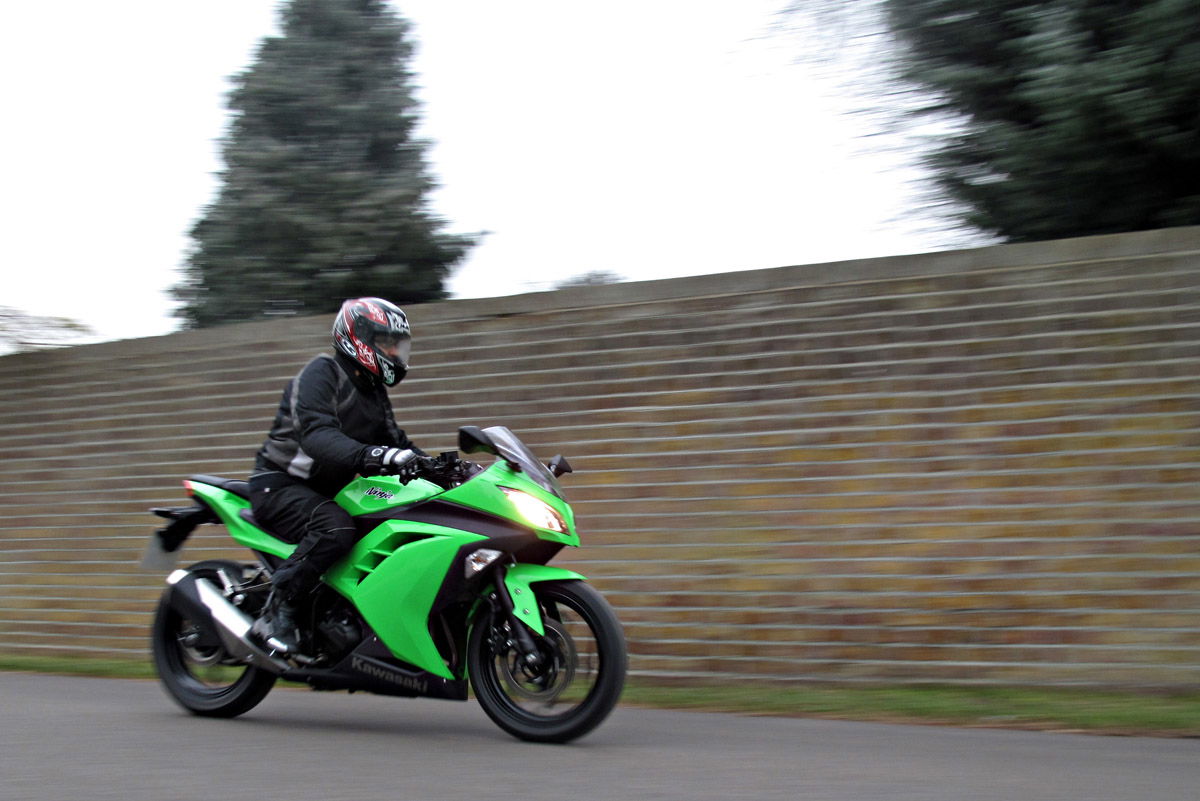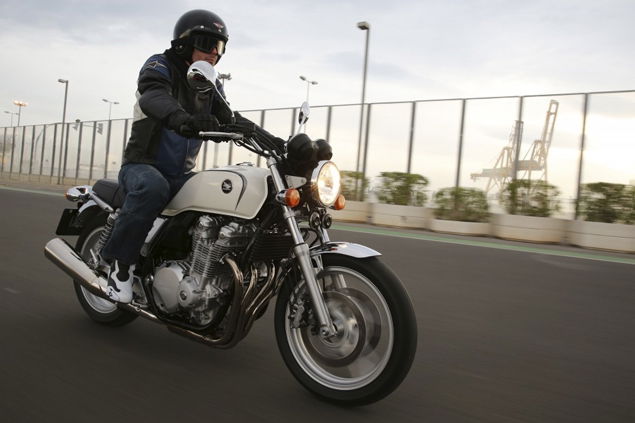First Ride: 2013 Triumph Daytona 675R review
Forget 250s. This is the best handling bike you can buy.


THIS is the Daytona 675 Triumph always wanted to build. It isn’t just a couple of tweaks and a facelift, it’s a totally new model - the front mud guard is about the only part that carries over from the old bike.
According to the Daytona 675’s lead development rider, when Triumph started the Daytona 675 project in 2004, the market trend was for centralised underseat exhausts and while Triumph felt a radical three-cylinder Supersport bike was the direction to go in, they didn’t want to stunt the sales of their new model with looks that, 8 years ago, could have proved controversial.
That’s the main reason the original Daytona 675 featured an underseat exhaust. Meanwhile, Triumph were already testing a model with an under-slung exhaust and knew it was the next step.
Moving the exhaust doesn’t just place the weight further towards the centre of the bike, it also allows the engine’s position to be changed and the bike’s geometry to be altered too. One of the project’s main tasks was to improve agility and for anyone who’s ridden either the old Daytona or Daytona 675R, you’d know that’s a tall order.
At the heart of the new 675 is the engine. Triumph have widened the bore and shortened the stroke (2mm wider and 2.7mm shorter) and in doing so, have ditched the old wet liner design and switched to an all-aluminium block in order to keep the engine’s dimensions the same, despite running wider pistons. The added benefit of the new block is that compression can be raised and it’s now up from 12.65:1 to 13.1:1. Other additions include twin injectors per cylinder, higher-grade main bearings, a 5% lighter crankshaft assembly and an oil-scraper in the lower crankcase to remove oil from the crank webs. The thinking behind these changes is that the less power you need to accelerate engine parts, the more you’ll have to accelerate the rear wheel.
The engine changes don’t stop there, the inlet vales are no longer steel and are replaced with titanium alloy valves, shaped to improve air flow. The exhaust valves are smaller too and weigh 7% less, meaning they can be lifted higher. The valve train is 10% lighter overall and its improved lift means more gas flow and more compression means more bang.
The gearbox features a new selector mechanism, designed to improve selection between first and second gears and to also give a lighter feel. The final drive has been altered too; the gearbox sprocket has been changed from 16T to 15T in order to improve acceleration. The new air intake saves 0.5kg from the previous version and improves airflow too.
Perhaps the largest single component change and one that many owners been crying out for is the addition of a slipper clutch (Triumph call it a slip/assist clutch). It’s there to stop the rear wheel hopping when braking hard, meaning you can enter corners faster and smoother. Triumph also claims it makes the lever action 25% lighter too. Let’s be honest, Triumph are late to this particular party.
Is the new Daytona 675 a Street Triple with a fairing? No, far from it in fact. The tank and wheels are the same as the new Street Triple but everything else is different. Compared to the older Daytona 675R, the swingarm is lighter, shorter and stiffer but remains adjustable. The suspension remains the high quality Öhlins TTX36 rear shock, with a revised sprint rate and damping (mainly due to less weight over the rear thanks to the repositioned exhaust) and the front forks are still Öhlins NIX30 but with 10mm more travel. Don’t confuse this stuff with gold coloured forks that carry an Öhlins sticker like you might see on some manufacturer’s ‘S’ models.
One of the key changes to the chassis is the new Daytona 675’s weight distribution and wheelbase. The wheelbase is now 1,375mm, 20mm shorter, thanks in part to sharper rake (and therefore reduced trail), down from 23.9-degrees to 23-degrees. Weight bias is now set slightly further over the front at 52.9% compared to 51.8% on the older model.
The 675R comes with ABS as standard. It has three modes; Off (ok, not strictly a mode), On (still, probably not exactly a mode) and Circuit. Circuit mode is interesting as it reduces intervention in dry conditions and will allow you to drift the rear on the entry to corners (although being allowed to and being able to aren’t options you can switch on and off). While Circuit mode will reduce intervention it won’t back-off if the rear wheel lifts, so you can go over the front if you brake too hard, even with ABS Circuit mode on. You have been warned.
It’s only 1kg lighter than the previous model but during the press conference, the words ‘owner feedback’ and ‘race team feedback’ were liberally sprinkled in among the changes, this is more than just a weight saving exercise. Tiny changes like 5mm higher bars to reduce the weight on your wrists or baffles in the sump to reduce oil surge under braking are both examples from either end of the ownership experience that prove Triumph are listening. 1kg doesn’t sound like a lot but if you look at those changes above, you’ll get a feel for how much thought has gone into the new Daytona 675.
Race tracks like Cartagena are the ideal proving ground for bikes like the Daytona 675: tight, twisty and narrow. Pin-point precision wins over brutal horsepower. The Daytona 675R looks well armed for this particular battle.
I used the first session to familiarise myself with Cartagena’s layout, not trying to squeeze everything I could from the bike. Despite the bike’s higher rev-ceiling it doesn’t feel like low down torque has been sacrificed for horsepower higher up the range. You can still slot 3rd and drive cleanly from low revs but the revs don’t stay low for long. Even cruising around not chasing the redline, the rev-needle wants to sweep around the clocks, eager to take you past 8,000rpm where the action really begins to heat up.
Lapping at a moderate pace, concentrating on finding some good lines, I found myself running over pieces of tarmac that looked broken and lumpy, but their harshness is fed back to me through the bars with just a small wiggle and not the expected jolt. Even at these slower speeds the front feels rooted in place, a perfect balance between firm and forgiving.

